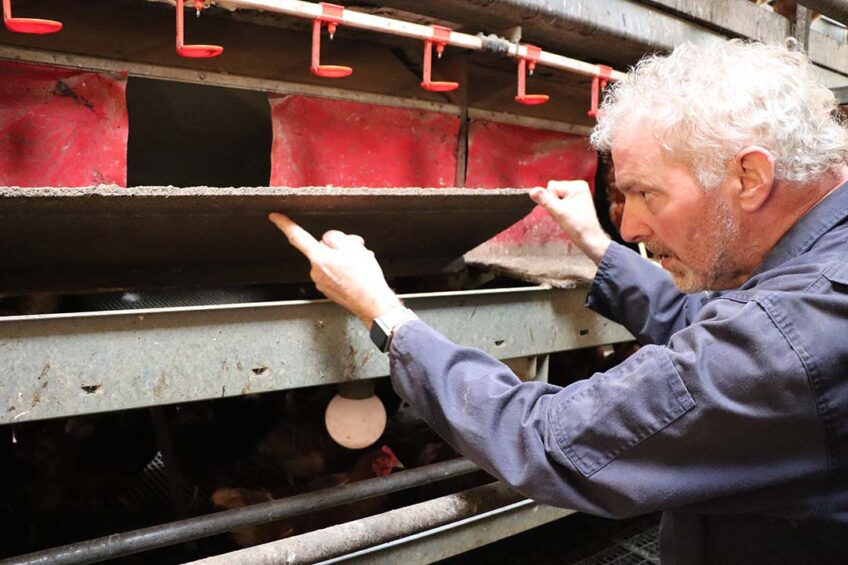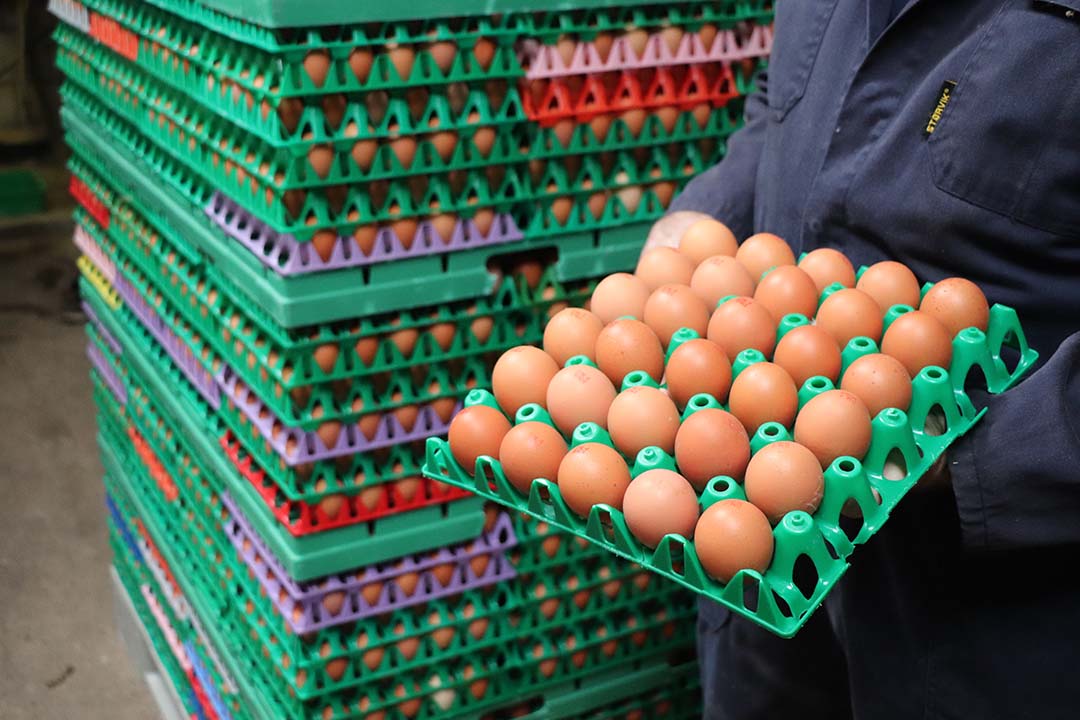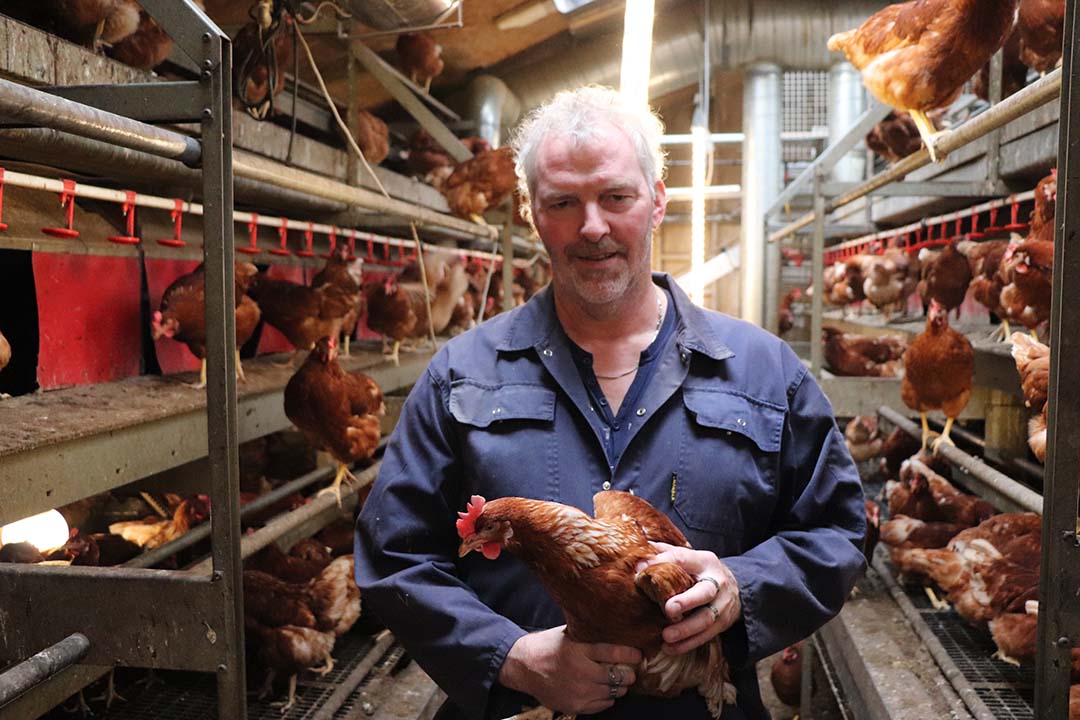Getting to grips with red mites in poultry

They are little but can turn into a big problem. A red mite infestation can soon become a headache, especially with limited means to tackle them. “This is especially true in organic farming,” knows Dutch organic layer farmer, Jacco Korenblik. When he was invited to take part in a trial for a novel red mite product, he was the first to sign up.
Until a couple of years ago, red mites weren’t on Jacco Korenblik’s radar at all. When he took over a small broiler operation from his father in the Dutch town of Harfsen, the issue was non-existent. The short broiler cycles, combined with thorough cleaning and disinfection every 6 weeks, gave the mites no chance. That changed when he switched to organic layer production.
Financially it looked like a wise decision at the time, especially as the operation was small. They went from 16,000 broilers to 8,400 layers, combined with providing daytime activities for elderly people with dementia, 10 hectares of arable land and Jacco’s second job at a local feed mill. “I really like the layer business but these birds need to be managed and looked after in a different way,” he says.
Staying on top of things
Alongside his farming business, Korenblik has worked as a full-time broiler feed advisor since 1993, including for the German compound feed company Raiffeisen Ems-Vechte since 2021.
When it comes to red mites, his father taught him to always ensure the cleanest poultry house possible. There are still chemical products against red mites available on the market in Europe, but Korenblik believes it is risky to use them. “With these products you have to stay below a certain threshold and that leaves me with too much uncertainty,” he noted.
In the past, Korenblik used Elector for some years. The product is also legal to use in organic layer production in the Netherlands. “That product worked well but it is quite expensive and you always have to go into the house with your backpack sprayer to apply it,” said Korenblik, who has a fixed system in place for every flock.

After the laying hens are spent, he first removes the manure with a loader. He then sweeps the house thoroughly with a broom and cleans it meticulously with cold water. Korenblik: “I use a lot of water and a high-pressure cleaner, then I disinfect the house. By doing so, I was able to keep red mites out of my production system for the first 3 to 3.5 months. How long it takes for them to return greatly depends on the temperature. My house is not heated and in cold weather it takes longer for them to return than in warm, summer weather. By the way, I discovered that red mites can withstand moderately severe frost so, unfortunately, frost will not kill them.”
Trials with anti-blood-mite product
Because Korenblik is a broiler feed advisor himself, he is well connected. He is employed by Raiffeisen Ems-Vechte and in the past obtained his feed from the Dutch compound feed company, Reudink, which specialises in organic feed. Reudink is part of the large Dutch compound feed company ForFarmers, which is now active throughout Europe.
“One of my feed advisors called me in the autumn of 2019 with an invitation to take part in a trial with a new product against red mites. The most important reason for participating was because it is a natural remedy. As we have organic layers, a naturally-based product removes a lot of worries when it comes to the risk of residues. Another advantage is that I can use the product in the house during the flock cycle,” said Korenblik.
The MiClean product of Novioponics, as it is called – which did not yet have a name at the time of the trial – was used in various tests during the winter of 2019/2020, and according to Korenblik, researchers from MiClean tested the product on his farm for several months.
The farmer explains that the product works by encapsulating the red mites. Korenblik: “MiClean is European Ecolabel certified, so it is completely safe to use and is permitted in the organic sector.” It consists of a kind of gel that must be sprayed onto the red mite. After about 5 minutes the gel starts to harden and after about twenty minutes the mites can no longer move.
“To achieve maximum effect, the supplier recommends spraying the areas where the mites are located 2-3 times and repeating this with an interval of 3-5 days,” said Korenblik. The agent can be applied with standard spray equipment, taking into account a spraying volume of 0.33 litres per hundred laying hens.
Spraying in the right place
Right after the first tests Korenblik noticed that the anti-mite agent worked well. “I saw that my hens were indeed less bothered by blood mites,” he said. Because it is a pity to let resources go to waste, of course, the Dutch poultry farmer first used up the residual product that the researchers had left behind. Nowadays he buys it from his employer Raiffeisen Ems-Vechte that now also sells the product. The poultry farmer has completed 2 full cycles since the last trial. On average, the flock cycle is about 80 weeks.

“The application of the anti-red-mite product during the past 2 rounds went well. It means less stress and loss among the hens and therefore ensures more eggs.” The third flock of organic laying hens was placed in July 2023. “I am now 4 months in and just now the red mites are starting to appear. I think it is because it is now (in October) about 7°C during the day – relatively cold weather. And, as I mentioned, blood mites do not like cold weather,” he said.
Focus
Korenblik believes that getting to grips with red mites requires focus and attention. He inspects the birds and the house twice a day as a rule. “You do develop an eye for the hiding places of the mites,” he says. Because he recently discovered red mites again under the wooden coverings of the outer egg belt, he will soon start dealing with them again. Even though MiClean works well, he says, it is still difficult to hit the mites. “The mites in our house are found mainly in the U-tubes of the Bolegg Terrace aviary system and also under the wooden plates of the outer egg belt of this aviary system. That is their favourite hiding spot. So when I apply the product, this is where I try to hit them hard.”












